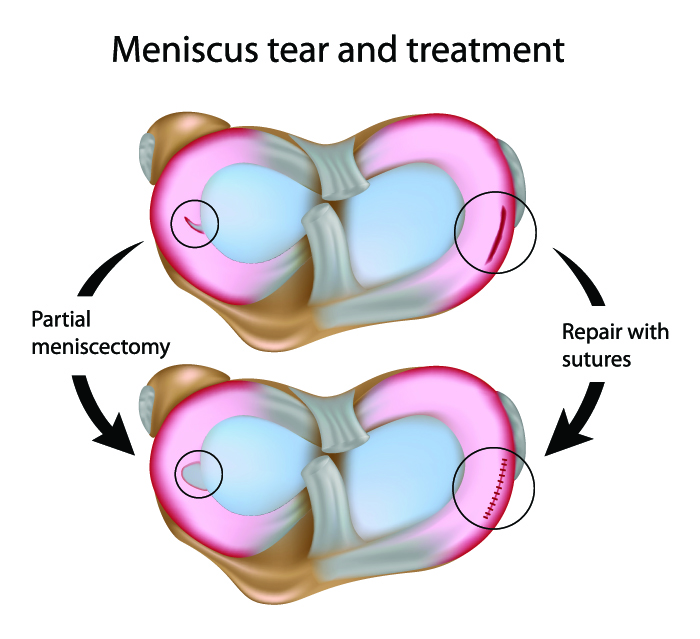Meniscus Repair Treatment in Alwarpet, Chennai
A meniscal repair is a surgical technique that uses a keyhole incision to repair a torn meniscus. It is a mildly invasive procedure that is frequently done as an outpatient procedure. Elements impacting success include tear age, location, patient age and any associated wounds.

What is a meniscus repair surgery?
You have two C-shaped rings of ligament (delicate tissue) that connect your thigh to your shinbone. These are known as menisci. They function as bone protectors. They also help in the stability of your knee. Meniscus tears are more common in athletes who participate in vigorous sports such as football and hockey. However, this injury can also occur when you bend, squat or lift anything heavy. When the bones and tissues surrounding the knee begin to wear out, the risk of injury increases.
To seek treatment, you can consult an orthopedic doctor near you or visit an orthopedic hospital near you.
Who qualifies for meniscus repair? When do you need to see a doctor?
If your meniscus is torn, your leg may swell up and feel heavy. You may experience pain when bending your knee. Treatment for a meniscus tear depends on its size, kind and location within the ligament. Your doctor would almost certainly advise you to relax, take pain medications and apply ice to your knee. They may also advise exercise-based recovery. This will help strengthen the muscles around your knee and keep it stable. If none of this works, the doctor would suggest that you get a surgery done.
Request an appointment at Apollo Spectra Hospitals, Alwarpet, Chennai.
Call 1860 500 2244 to book an appointment.
What are the different types of meniscus repair surgery? How are they done?
Your primary care physician may opt to do any of the following procedures:
- Arthroscopic repair:
Your primary care physician will make a few small incisions on your knee. They'll insert an arthroscope to examine the tear. Then, they'll place little devices that look like darts along the rip. These will be assimilated by your body over time. - Arthroscopic partial meniscectomy:
Your primary care physician will remove a portion of the torn meniscus so that your knee can function normally. - Absolute meniscectomy through arthroscopy:
During this procedure, your PCP will remove the whole meniscus.
What are the benefits of meniscus repair surgery?
- Improves the stability of your knee
- Stops or slows the progression of joint inflammation
- Reduces pain in the knee
What are the risks?
- Blood clots
- There is blood in the knee area
- Infection
- Damage to nerves and veins near the knee
Conclusion
Performing a meniscal repair reduces the likelihood of knee-joint deterioration. Little rips on the meniscus’ outside border typically heal on their own.
It is important to follow your doctor's post-op instructions for any recovery. Their advice may include keeping your weight off your knee, icing and hoisting it, and keeping your wound clean. You'll also undergo non-invasive therapy to strengthen your knee and the surrounding area.
Most patients can resume regular activities within a month and a half after the medical treatment.
Most younger patients face a fairly low risk of undergoing a knee replacement. Nonetheless, for certain patients with severe injuries, knee replacement may be necessary as well.
Symptoms
Our Top Specialities
NOTICE BOARD
CONTACT US
CONTACT US
 Book Appointment
Book Appointment


.svg)
.svg)
.svg)
.svg)








